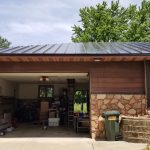By Dylan Sullivan for NRDC
California’s new building energy code ensures that most new homes in the state will produce as much electricity as they consume, using solar power and energy efficient construction to zero out electricity use from lighting, cooling, and plugged-in appliances. While the code drew national attention, the reporting missed a nuance: homes can comply with community solar systems, too.
A new analysis released today finds that using community solar to power energy-efficient homes can increase both the consumer and environmental benefits of zero net energy programs. Yielding these savings will require overcoming some real-world barriers, however.
Community solar allows individual households to purchase shares of a larger solar project, sited in their community, instead of getting an individual rooftop system. In the study, commissioned by the Natural Resources Defense Council (NRDC) and the National Rural Electric Cooperative Association (NRECA), analysts from the Brattle Group found that community solar could be a more cost-effective and powerful carbon-cutting tool than individual rooftop installations.





